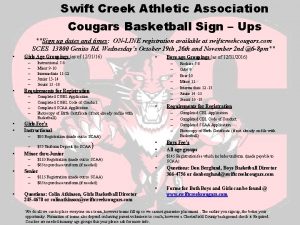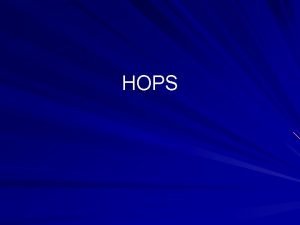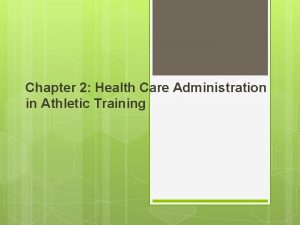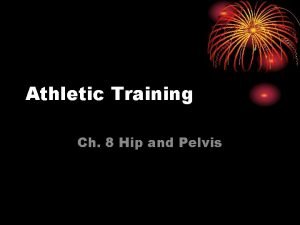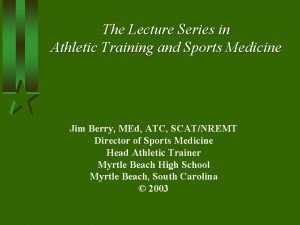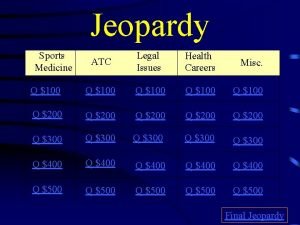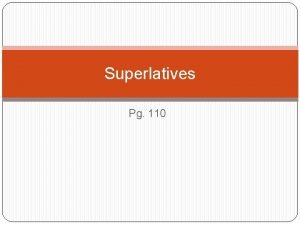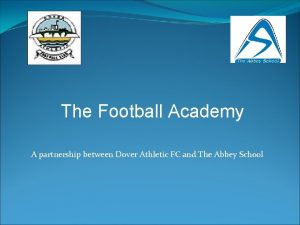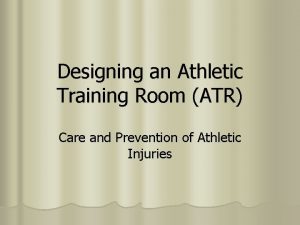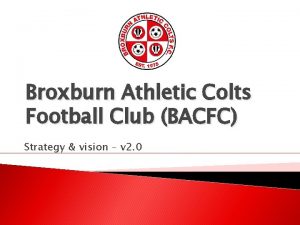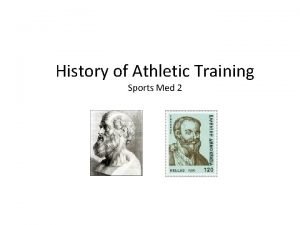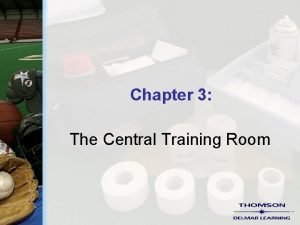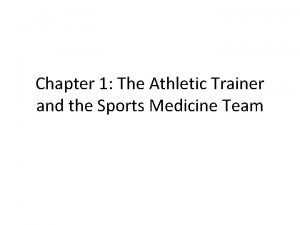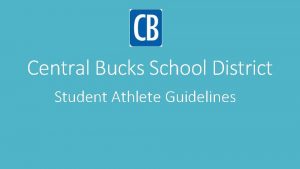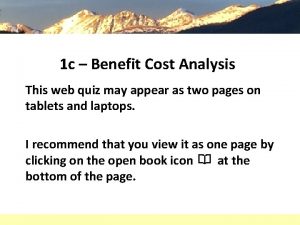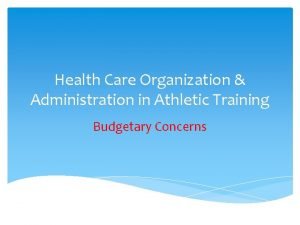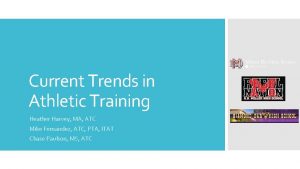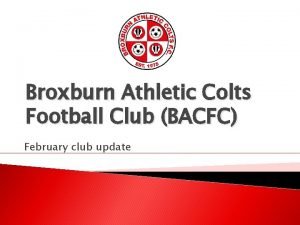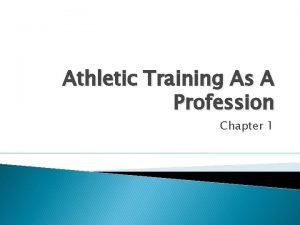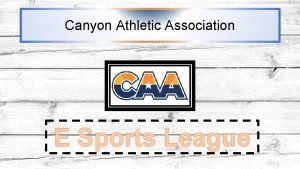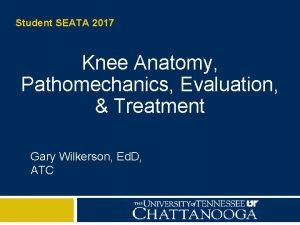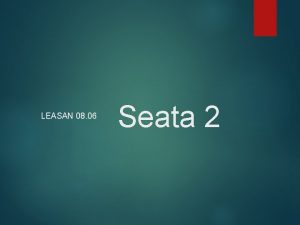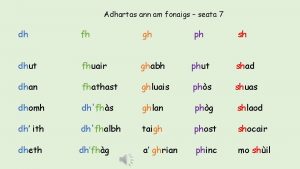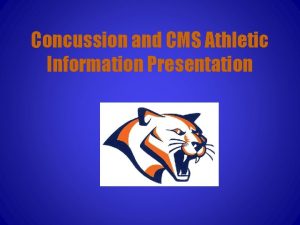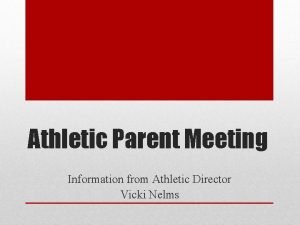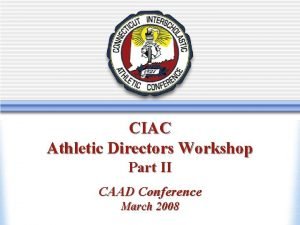NonTraumatic Medical Conditions 32 nd Annual SEATA Athletic





































- Slides: 37

Non-Traumatic Medical Conditions 32 nd Annual SEATA Athletic Training Student Workshop Mick Lynch, M. D.


Sickle cell trait/anemia http: //www. nata. org/consensus-statements

Common Medical Problems Will likely be infectious in nature

Viral infections By far the most common infectious etiology Are self-limited infections Will not respond to antibiotics Treatment is entirely supportive

Comparing the Symptoms of Influenza and the Common Cold Onset Abrupt More gradual Fever Common: 37. 7 to 40º C (100. 4 to 104ºF) Increase of only about 0. 5ºC (1ºF) Myalgia Severe, common Uncommon Arthralgia Severe, common Uncommon Anorexia Common Uncommon Headache Severe, common Mild, uncommon Cough (dry) Common, severe Mild to moderate Malaise Severe Mild Fatigue, weakness More common, lasts 2 -3 weeks Very mild, short lasting Chest discomfort Common, severe Mild to moderate Stuffy nose Occasional Common Sneezing Occasional Common Sore throat Occasional Common

Flu versus Swine flu Influenza viruses are all cousins

Viral Infections

H 5 N 1 influenza H is hemagglutinin Are 16 subtypes N is neuraminidase Are 5 subtypes Controlling genes may swap around in host

What did mom tell me? Feed a fever, starve a cold? Feed a cold, starve a fever?

Supportive Treatment Rest Fluids Tylenol Oral Intake (food & water as tolerated) Clear liquids – water, ginger ale note diet sodas have no kilocalories Full liquids – broth, bullion, Jello BRAT diet – bananas, rice, apple sauce, toast Medications as needed for symptoms

Bacterial Infections Will respond to antibiotics Also requires supportive treatment

Gastritis - Gastroenteritis Gastritis implies involvement of upper GI tract nausea, dyspepsia, vomiting Enteritis implies involvement of lower GI tract diarrhea, abdominal cramping Gastroenteritis involves both

Spleen Can become enlarged secondary to: Infectious mononucleosis Blood diseases -leukemia, lymphoma Kehr’s sign – pain in left upper quadrant and left shoulder suggests splenic rupture

Appendicitis Inflammation of vermiform appendix

Appendicitis Fever, nausea, abdominal pain Pain often starts peri-umbilical then migrates to Mc. Burney’s point halfway between ASIS and umbilicus Rigid abdomen with marked tenderness Absent bowel sounds implies absent peristalsis

Obturator Sign Inflamed appendix is in contact with the obturator internus muscle, which is stretched by this maneuver. The obturator sign. Examiner moves lower leg laterally while applying resistance to the lateral side of the knee (asterisk) resulting in internal rotation of the femur. Pain on passive internal rotation of the flexed thigh.

Psoas Sign The psoas sign. Patient lies on left side. Examiner extends patient's right thigh while applying counter resistance to the right hip (asterisk). Pain on passive extension of the right thigh. Anatomic basis for the psoas sign: inflamed appendix is in a retroperitoneal location in contact with the psoas muscle, which is stretched by this maneuver.

Hepatitis Liver can become inflamed secondary to: Hepatitis A – food and water borne Hepatitis B – blood borne Infectious mononucleosis Chemical induced

Pancreas Rarely injured in athletics Can develop pancreatitis Most commonly involved as diabetes

Diabetes mellitus Is a disorder of carbohydrate metabolism Diabetes type I = juvenile onset Diabetes type II = adult onset Distinction between the two is insulin production

www. nata. org/position-statements

Diabetes mellitus Type I – pancreas fails and no longer produces significant amount of insulin Type II – pancreas produces large amounts of non-functional insulin

Diabetes mellitus Type I requires insulin Type II becoming quite common in children may or may not require insulin often can be controlled with diet, exercise

Urinary tract infection

Nephrolithiasis

Anemia Is decrease in red blood cell mass Several different causes Iron deficiency anemia most common

Iron Deficiency Anemia

Iron Deficiency Anemia

Asthma Better termed as reactive airway disease Is an obstructive pulmonary disease Have difficulty getting air out

Asthma

Asthma Obstruction is caused by smooth muscle spasm of bronchioles Spasm results from inflammation of airways Treatment involves breaking spasm cycle Rescue medications release spasm - bronchodilators Maintenance medications reduce inflammation

Exercise induced asthma Trigger is exercise 8 -10 minutes into bout Has refractory period

Asthma



 Learning exercises chapter 1 medical terminology
Learning exercises chapter 1 medical terminology Torrance memorial lab manhattan beach
Torrance memorial lab manhattan beach California medical license application
California medical license application Cartersville medical center medical records
Cartersville medical center medical records Gbmc infoweb
Gbmc infoweb Hepburn osteometric board
Hepburn osteometric board Swift creek basketball
Swift creek basketball Burnsville athletic club
Burnsville athletic club Ahsaa eligibility rules 2021
Ahsaa eligibility rules 2021 Hops evaluation
Hops evaluation Hops procedure
Hops procedure Healthcare administration in athletic training
Healthcare administration in athletic training Moi athletic training
Moi athletic training The athletic trainer is most directly responsible
The athletic trainer is most directly responsible Athletic training jeopardy
Athletic training jeopardy Antes pg
Antes pg North carolina athletic association
North carolina athletic association Florida high school athletic association basketball
Florida high school athletic association basketball Dover athletic academy
Dover athletic academy Atr room
Atr room Broxburn athletic colts
Broxburn athletic colts Herodicus of megara
Herodicus of megara Central training room definition
Central training room definition Chapter 1 athletic training as a profession
Chapter 1 athletic training as a profession Central bucks athletic association
Central bucks athletic association Refer to the diagram for athletic shoes
Refer to the diagram for athletic shoes Non expendable supplies athletic training
Non expendable supplies athletic training Athletic student coverage aga
Athletic student coverage aga Athletic clearance.com login
Athletic clearance.com login Natural grass athletic fields
Natural grass athletic fields Price of sport sandals drops drastically
Price of sport sandals drops drastically Current trends in athletic training
Current trends in athletic training Bacfc
Bacfc Athletic trainer liability
Athletic trainer liability Hanover central athletics
Hanover central athletics Athletic trainer liability insurance
Athletic trainer liability insurance Chapter 1 athletic training as a profession
Chapter 1 athletic training as a profession Caa esports
Caa esports






